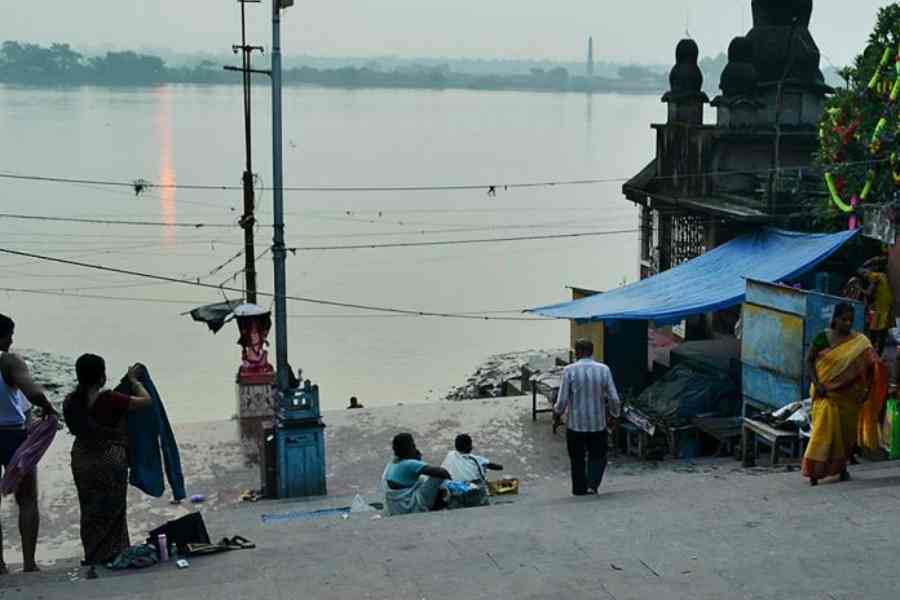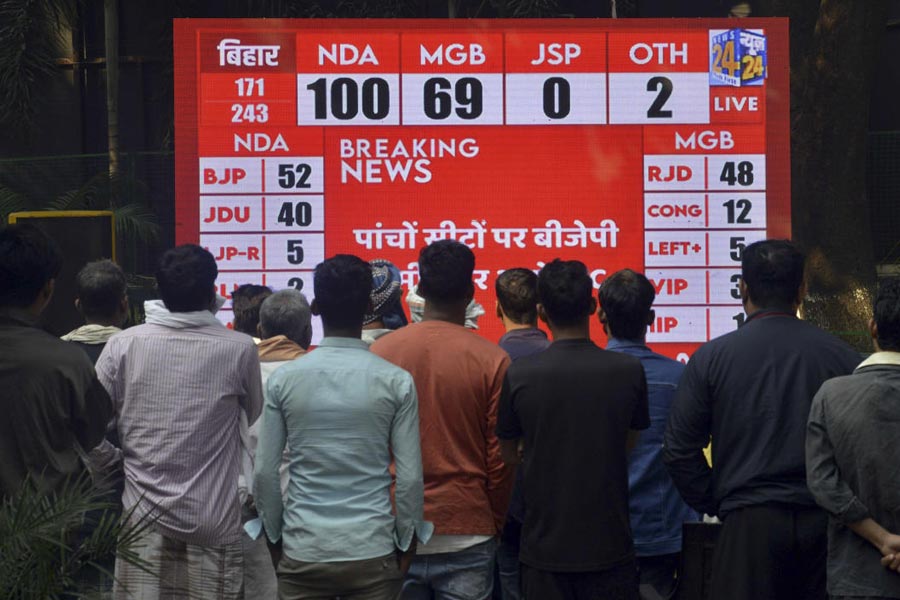The ghats of Calcutta are unapologetically dominated by men. They sit bare-bodied, often in a simple gamchha, staking claims on corners for a game of carrom and cards, smoking long into the evening. Their presence remains unquestioned; their occupation of space is absolute. Women, on the other hand, pass through. Their presence is transient; their engagement conditioned by acts of domesticity, faith, or riverfront labour, always dictated by time and rarely by leisure. Women bring clothes to wash, children to bathe, offerings to float upon the water. They work, worship, and leave. Their presence is accepted only as long as it is functional.
While the subaltern labouring body has always been integral to the riverfront economy, little has been discussed about the stark gendered division that lies within it. The boatmen, the priests, the doms, and the vendors — all overwhelmingly male — stake their claim with permanence and bargain better for their work compared to their female counterparts. Women’s labour at the ghats, although just as essential, is rendered invisible, absorbed into the background of the city’s informal economies. Be it the cut-flower stringers, the women farmers from the city’s hinterland, selling their produce at the Mullick Ghat flower market, the old widow who sells the day’s catch at Ahiritala ghat, or the food vendors near the Armenian ferry ghat — each occupies a tenuous space for visibility on the margins of the mahanagar. In the evenings, the para boys arrive for the ghat-games. The stone steps become a walled fortress that pushes women away, their safety now a question, their welcome conditional. Youth clubs, almost always male, become informal gatekeepers, transforming the ghats into closed spaces for women.
But then, one may ask, how do women navigate these liminal edges of the metropolis with quiet defiance, carving out economic agency in spaces that refuse to recognise them? The answer perhaps lies in a sense of brutal liberation offered by the river’s edge — not one granted, but one taken, out of sheer necessity. They return to the ghats dictated by time-conditioned and subversive practices — moments when these barriers weaken. They reclaim their space of power through occupancy at the peripheries of the city’s markets or the interstices of the city’s infrastructure — under bridges, at the corners of foot/over-bridges, staircases, and in the unused heritage precincts of the dilapidated zenana (women’s bathing areas). They do not own these spaces; they carve out slivers of them, trading in patience, compromise and persistence. Their vending spaces are small, their earnings are meagre, and precarity around their survival looms all day. But they remain, because they must. In a city that offers them little, these fragments of the ghat are enough to make a living, if not quite a livelihood.
The ghats also offer episodic phases of greater visibility and participation by women during religious festivals, such as Chhath Puja, Maha Shivratri, Neel Shashthi, and Ganga Puja, which draw large numbers of women for ritualistic snans (dips). Draped in sarees, their hands full of offerings, they reclaim the ghats with devotion as their shield. For a few hours, the river belongs to them. However, even in faith, the old hierarchies resurface. While upper-caste, middle-class women perform their prayers undisturbed, the working-class and Dalit women wait for their turn, engaging with the river when the crowd thins out. The city’s rigid social order does not dissolve; it only rearranges itself temporarily. When the rituals conclude, the ghats reset, and the old gendered boundaries are restored, blurring these nuanced intersections.
To ask where do the women sit, where do they vend, what do they do during leisure is to ask who has the right to the city’s waters. The question lingers, unresolved. With new urban projects and beautification drives on the horizon, the focus on spatial justice must not stop at creating ‘women’s corners’ but instead think of radical ways of dismantling the everyday hierarchies that govern public space.
Raina Ghosh works as a consultant for the Research & Advocacy Division at the Digital Empowerment Foundation











